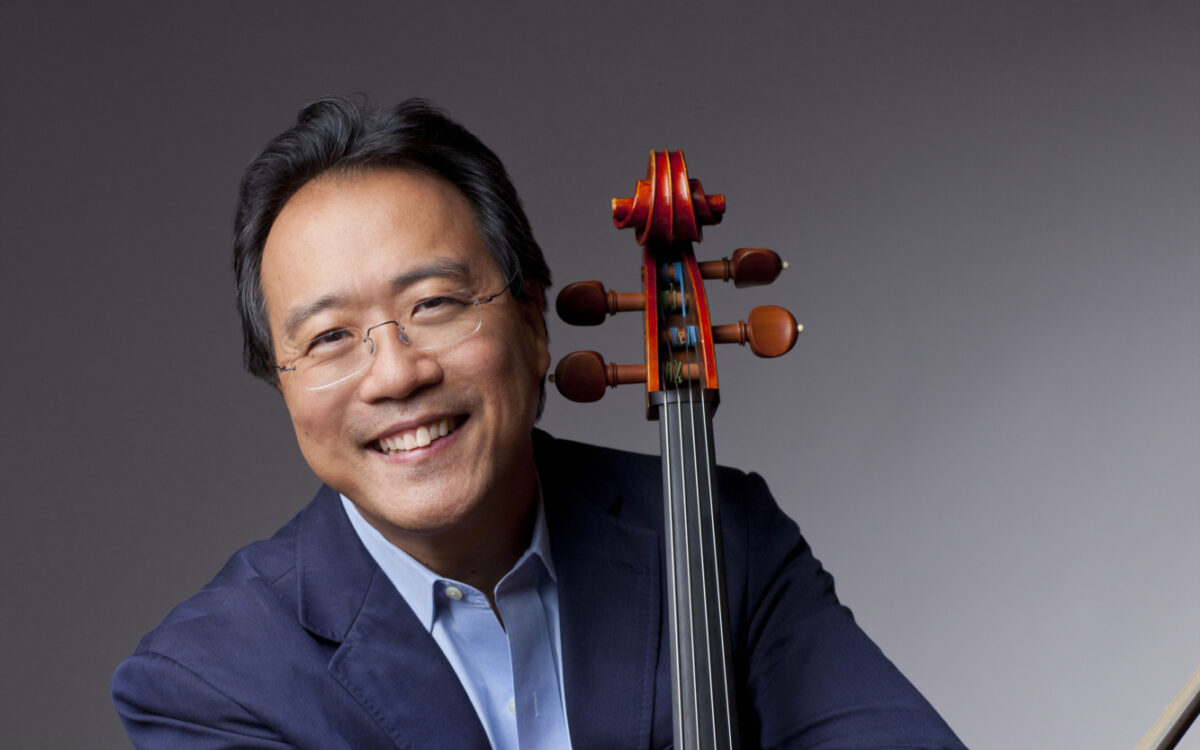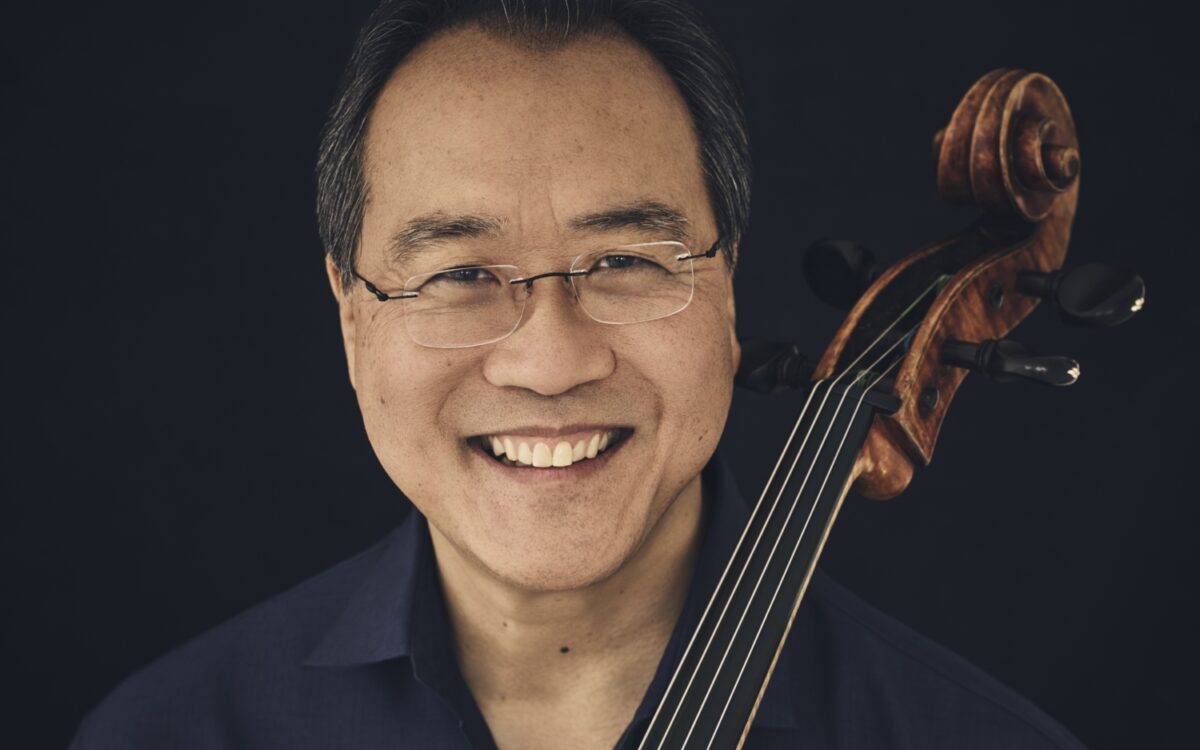Cello Concerto No. 1
Dmitri Dmitrievich Shostakovich was born in St. Petersburg, Russia, on September 25, 1906, and died in Moscow on August 9, 1975. He composed his Cello Concerto No. 1 in summer 1959, completing the full score at his summer house at Komarovo, near Leningrad, on July 20, 1959. The premiere took place on October 4, 1959, in Leningrad, with soloist Mstislav Rostropovich, to whom Shostakovich dedicated the work, and the Leningrad Philharmonic Orchestra under the direction of Yevgeny Mravinsky.
In addition to the solo cello, the score for the Cello Concerto No. 1 calls for piccolo, flute, 2 oboes, 2 clarinets, bassoon, contrabassoon, horn, timpani, celesta, and strings (first and second violins, violas, cellos, and double basses). The concerto is about 30 minutes long.
When Dmitri Shostakovich and the great Russian cellist Mstislav Rostropovich got together, as they often did over the course of a remarkably productive collaborative friendship that lasted for nearly 30 years, they were rarely at a loss for words. As Shostakovich’s son Maxim recalled in an interview, so freely did the conversation (often lubricated by vodka) flow between his father and Rostropovich that one day when the cellist arrived, Shostakovich joked, “How about if we keep quiet for a while?”
The two artists first met in autumn 1943 when Rostropovich, then 16, enrolled in the Moscow Conservatory to study cello and composition. As Rostropovich later recalled, Shostakovich (21 years his senior) was at the time “tremendously popular, in the wake of the success of the Seventh Symphony”—the Leningrad, begun in the first days of the Nazi siege and destined to become an international symbol of the courageous Soviet war effort. Their relationship deepened when Rostropovich performed Shostakovich’s Cello Sonata, Op. 40, with the composer in 1954 and on a tour of the USSR, eventually recording it.
Having already collaborated with Sergei Prokofiev, who died in 1953, Rostropovich was eager to have the other great Soviet composer, Shostakovich, write a work for him. But (as related by biographer Elizabeth Wilson) Shostakovich’s wife Nina warned: “If you want Dmitri Dmitrievich to write something for you, the only recipe I can give you is this—never ask him or talk to him about it.” Restraining himself with great difficulty, the garrulous Rostropovich avoided the topic. The cellist’s anticipation grew when he read an interview in Soviet Culture on June 6, 1959, where the composer revealed that he was working on something new for the instrument. “My next large work will be a Concerto for Cello and Orchestra. The first part, an allegretto in the style of a comic march, is already complete. It looks like the concerto will have three movements. To say anything definite about its content is difficult….”
In late July 1959, Rostropovich received a note from Shostakovich inviting him to perform the new concerto. The cellist and his pianist, Alexander Dekyukhin, travelled quickly to Leningrad, where the composer played through the piece on an upright piano, admitting that it “was extremely dear to him.” When he had finished, having even shed a few tears, the shy and modest Shostakovich disarmed Rostropovich by asking repeatedly, “Do you like it? Do you really like it?” When the cellist assured him that he was “absolutely shaken to the core,” Shostakovich responded: “Then there remains just this one question. If you really like it so much, then will you please permit me to dedicate it to you?” Flattered beyond words, Rostropovich agreed and set about learning the concerto by heart in three days, practicing ten hours a day in his hotel room and performing it for the composer with Dedyukhin on the fourth day. The composer was amazed that Rostropovich had understood the piece so quickly and had already committed it to memory. To seal the deal, they shared a bottle of vodka, which “served as combustible fuel” for another run-through.
As was his tradition for large new orchestral works, Shostakovich entrusted the official premiere to the Leningrad Philharmonic and his longtime interpreter Yevgeny Mravinsky. Following the October premiere, on November 6, 1959, Rostropovich brought the concerto to the United States, performing with the Philadelphia Orchestra under Eugene Ormandy. Shostakovich was also present for this historic occasion, one of the most notable musical events of the Cold War, and to oversee the first recording of the piece. In the years to come, Rostropovich played the concerto all over the world, making it almost his personal trademark. (Shostakovich would also dedicate his Second Cello Concerto to Rostropovich in 1966.)
In form, the First Cello Concerto bears a strong resemblance to the First Violin Concerto, written for David Oistrakh in 1948. Both have four movements, with a wickedly challenging third-movement solo cadenza in extended rhapsodic free form. As in the First Piano Concerto (1933), a brass instrument figures prominently, in this case the horn—the lone brass in the small orchestra. The concerto is, for Shostakovich, relatively spare and concise—especially during this period, when he was writing symphonies like the Tenth, with its large orchestral forces and length (50 minutes). The first movement, with two contrasting themes, follows classical sonata-allegro form. Some commentators have noted a strong Russian national flavor, perhaps most pronounced in the soulful second theme of the long slow movement, by far the longest of the four, which concludes with a ghostly duet between the cello (playing harmonics) and celesta. A sense of ironic humor and the grotesque dominates in the opening and closing movements, with strong rhythmic contrasts and sarcastic outbursts from the clarinets, particularly in the closing moments.
The jaunty four-note motif that opens the piece, played by the unaccompanied cello, functions as a sort of thematic kernel for the entire concerto, something like the opening of Beethoven’s Fifth Symphony. This motif (G, F-flat, C-flat, B-flat) seems moreover to be a variant of the composer’s personal four-note motto D-S-C-H (D, E-flat, C, B, corresponding to D[mitri] SCH[ostakowitsch] in the German transliteration) that appears in numerous works of this period, including the Tenth Symphony and the Eighth String Quartet. Scholars have pointed out that these four notes also allude to a march (“Procession to Execution”) from Shostakovich’s score for the 1948 film The Young Guard. There is one more deeply embedded ironic quotation: a tiny, distorted fragment from “Suliko,” Soviet dictator Josef Stalin’s favorite Georgian folk song. (Shostakovich’s erstwhile tormentor Stalin had died six years earlier.) But even Rostropovich did not notice this provocative reference in the concerto’s fourth movement until Shostakovich gleefully pointed it out. From Prokofiev’s Sinfonia-Concertante, Shostakovich borrowed the idea of bringing his concerto to a dramatic and abrupt close with seven insistent timpani blows.
Harlow Robinson
Harlow Robinson is an author, lecturer, and Matthews Distinguished University Professor of History, Emeritus, at Northeastern University. His books include Sergei Prokofiev: A Biography and Russians in Hollywood, Hollywood’s Russians. He has contributed essays and reviews to The Boston Globe, The New York Times, Los Angeles Times, Symphony, Musical America, and Opera News, and program essays for the Boston Symphony, Los Angeles Philharmonic, New York Philharmonic, Aspen Music Festival, and Metropolitan Opera.


